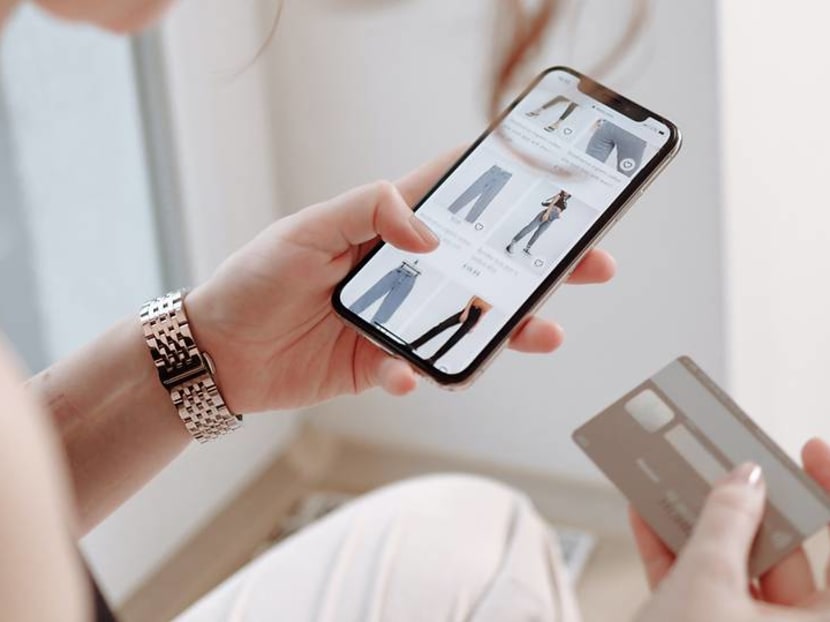Commentary: Why we feel a rush when we ‘Add to Cart’ and what we can do about it
Our sense of consumer control plays right into the hands of product designers who know exactly the right buttons to push to make us “Add to Cart” and “Buy Now”, say two business school professors.

SINGAPORE: In the last three months, have you bought something that you do not need but you bought on impulse anyway? Perhaps it was a beautiful bag or the cute looking household item?
COVID-19 has increased our spending online. A Visa poll published in March this year showed that nearly three in four consumers in Singapore are shopping more frequently online. Forty-five per cent went to large marketplaces such as Lazada or Amazon.
This isn’t surprising - we are stuck at home and feeling really bored. People I have met said they bought something online on impulse recently simply to make themselves feel better. Retail therapy is even more compelling now.
The world economy is structured in such a way that companies and countries thrive the more consumers purchase.
With the rise of intelligent algorithms, special attention is placed on how products “speak” to the consumers. This is why designers put in a lot of thought to things like how a new phone feels in your hand or why a beautifully designed home appliance is so compelling.
The look and feel of products are carefully researched and refined. The more they can trigger your emotional reaction, the more likely you would be willing to part with your money for it. Why do these tactics work?
This is because most of our consumption decisions are guided by our emotions. Research has shown that we like to think we are rational beings but our “heart” frequently overrides our “head”.
HOW DOES THE “HEART” DRIVE CONSUMERISM?
Research in academic literature has shown that people consume to fulfill three major needs – functional needs, social needs and psychological needs.
Functional need is self-explanatory. You need a hairdryer to dry your hair after shower.
Yet, functional needs do not drive our buying decisions. There are so many different types of hair dryers out there. Some hair dryers cost as little as S$25 whereas others cost as much as S$500. What differentiates these products?
In a 2021 paper in the Journal of Marketing, Jennifer J Sun, Silvia Bellezza, and Neeru Paharia showed that high-end products tend to be more durable and have longer product life cycles than mid-range products.
But this isn’t always the case and the relationship between price and quality can vary, depending on the product. Quite often, the expensive product tends to look nicer and can be used to define who we are.
For example, if someone forked out five to 10 times more for a high-end hair dryer, they want to share it on social media which invites comments. Such behaviours speak to our social and psychological needs.
WHY RETAIL THERAPY WORKS
Socially, humans have an innate need to communicate our personality, identity or our success to others. Since these are inherently “invisible” attributes, consumption is one way for us to convey such messages clearly.
A common observation of buying behaviour shows when our status in life changes, the type of products we consume change as well. There is always the more luxurious car, the newest phone, the latest laptop we acquire. Owning these products signal our status to others.
So even though your “head” tells you that you do not need the latest phone (which often is only slightly different from the older version you own), you may still gravitate towards it because it’s cool to own the latest gadget.
A 2005 study conducted in Canada by Katherine White and Darrin Lehman, and published in Personality and Social Psychology Bulletin, showed that Asians tend to compare upwards with those who did better than them. So the mindset we need to “keep up with the Joneses” is common among Asians.
Psychologically, studies show we also consume to make ourselves feel better. Have you had a really bad day and retail therapy made you feel instantly better? This is because when we buy something, we feel a sense of control over our circumstances. Losing control make people feel bad and buying helps us regain this.
Listen to Dr Sharon Ng talk to CNA’s Jaime Ho on the green consumer paradox:
Seeing something aesthetically appealing may also lead to heightened arousal (like when you see a 90 per cent discount off a brand you really love), and a greater impulse purchase to satisfy it.
During this pandemic, anecdotal evidence indicates more impulse purchases. The ease and prevalence of online platforms also make it easier for us to give in to these urges.
Making many small low value purchases which you can easily find on e-commerce platforms also allow us to mentally justify the consumption.
IMPACT OF OUR CONSUMERISM ON THE ENVIRONMENT
Yet, there is a deep impact of letting emotions drive our purchase decisions. We may end up buying more than we need thereby spending more than we should. But increased consumerism has broader and more insidious implications.
The more we buy, the more we tax the environment. This holds true even if you are buying products that are presumably produced in a more sustainable manner.
A Stanford Social Innovation Review article in 2016 argued that there is no such thing as a green product. Even though the environmental impact of green products is lower than that of regular products, they still exert a toll on the environment throughout their product life cycles.
This is because production of all products and services will require extraction of natural resources and the production process will also create waste. One example is electric cars. Car manufacturers are promoting electric cars as the car for the future. Yes, they are environmentally friendly, but these cars still need a massive supply of electricity to charge.
The battery packs still require a lot of raw materials to produce and needs to be disposed of subsequently. So just because we purchase electric cars does not mean there is no impact on the environment.
If car population increases simply because we thought electric cars are more environmentally friendly, Mother Earth will still be in trouble.
SIMPLY SAY “NO” TO YOUR HEART
Clearly, reducing consumption is the best solution to environmental protection. But because these are driven by emotions, it’s a complex mechanism to undo and certainly hard to curb our desires.
But if we are aware of our behaviours we can take some steps to recalibrate. There are simple things we can do.
First, before paying, look into your basket and ask yourself if you really need everything in it or anything in there is an emotional purchase you are likely to discard or not use often.
Second, if you are online, after adding items to cart, don’t confirm the purchase immediately. Shut the app, leave the page, and come back a few hours later. More often than not, the items sitting the cart will appear less desirable once the arousal level has decreased.
Finally, there’s no shame in buying second-hand goods. The Marie Kondo craze sent thrift shops in the US bursting with donations from her followers who suddenly realised how many things they had which they didn’t need or use. Used-goods platforms are just as good, and no one needs to know.
The truth is consumerism is deeply embedded in our society and is not going to go away, particularly in a pandemic. But if we are aware of emotional consumption, there is a way to slowly wean ourselves off. And the winners aren’t only us but our environment too.
Professor Sharon Ng is Head, Division of Marketing and Dr Boon Chong Lim is Deputy Head, Division of Marketing, Nanyang Business School, Nanyang Technological University, Singapore.










